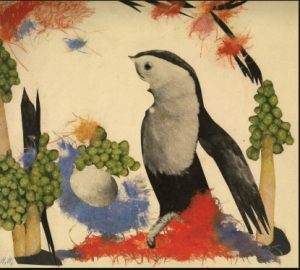Hannah Hoch was a member of the Dada Club. Hannah Hoch is the artist of the piece of the work above. She is famous for the college work. She criticizes the German culture it apart from its imagery and resembling this to the vividness and disjointed. Her work represents the emotions of modern life and the new era’s preferences of the individuals. She represents the decadences, sexism, and the corruption of the people at  Germany.
Germany.
These are the conditions which prevailed before the war, in Germany. They were more political in their nature and interest as compare to the montages. This piece of artwork depicts the approach to develop the intellect, take radical steps, the picture of the entertainers and different artists. The faces visible in the piece of artwork includes Marx, Lenin, Kathe Kollwitz, and Pola Negri.
The map in the artwork includes the map of Europe and the different countries which have empowered the women with the rights of the vote and other rights of the equality. It also depicts that women in Germany will be cut off by the male’s “beer-belly” culture. The pieces of the advertisement reflect the difference between modern art and craft and between the domesticity and public sphere.
Autobiography of Hannah Hoch:
She remained in the era of 1989 to 1978. She is the only female artist who becomes a member of the Dada group. She did her training at the School of Applied Arts in Berlin-Charlottenburg. In 1995, she romantically involved with Raoul Hausmann, he was an Austrian artist. She pursues her work with college work and photomontage. While Hausmann was not around, she joined the Dada school for running her expenditures. Rest of her life includes the continuous efforts on the criticism and the distinguishing the gender roles and differences (Contributors, 2017).
Part 2:
Freud is a psychoanalyst and talks about the mind and different levels of the consciousness according to him. There are three different layers of the consciousness one the preconscious; second is the conscious and third is unconscious. The understanding the actual behavior can be derived better through the unconscious as unconscious holds the pure information about the basic human instincts of, sex and aggression, as according to him the most dominant ones. Human behavior is derived through these instincts all of the human actions are grounded in the fulfillment of the instincts. (Yorke, 2015)
Applying the theory on the piece of the artwork which has chosen to be addressed in this assignment. That shows the basic instinct of the aggression and dominance of the male. The attitudes of the powerful dominant authority figures lead the world and hold power, discriminate by gender and objectify the female to fulfill the instinct of the sex.
Part 3:
I believe that this art is a unique piece and it is a real example in this case here the art is said to be cathartic as well. It can be seen that the pain is always there in this context. The gender difference shaves been seen in the art. The major portion consists of the work that has been treated in the art, and they are not too good in this regard. Therefore I will say the best of the scars are presented in the art, and they are needed to be taken in the consideration so that betterment could examine.
Read more:
It could be referred to the theories that have been explained in this paper. The scars and the violation have been determined in this case, and the major reason in the art is shown so that the realities could be determined in the eye. It has been determined that yes the love and the violence is the end of the object or the art. I believe that this statement is true as the violence could be depicted from the art most of the time. If not, then there is love in the art, and that is the other side which fraud has been discussed in his different theories which are implemented here.
References
Contributors, T. A. (2017, Apr 5). Dada. Retrieved from TheArtStory.org: http://www.theartstory.org/movement-dada.htm
Yorke, C. (2015). Freud, Sigmund (1856–1939). International Encyclopedia of the Social & Behavioral Sciences (Second Edition), 413–419.





